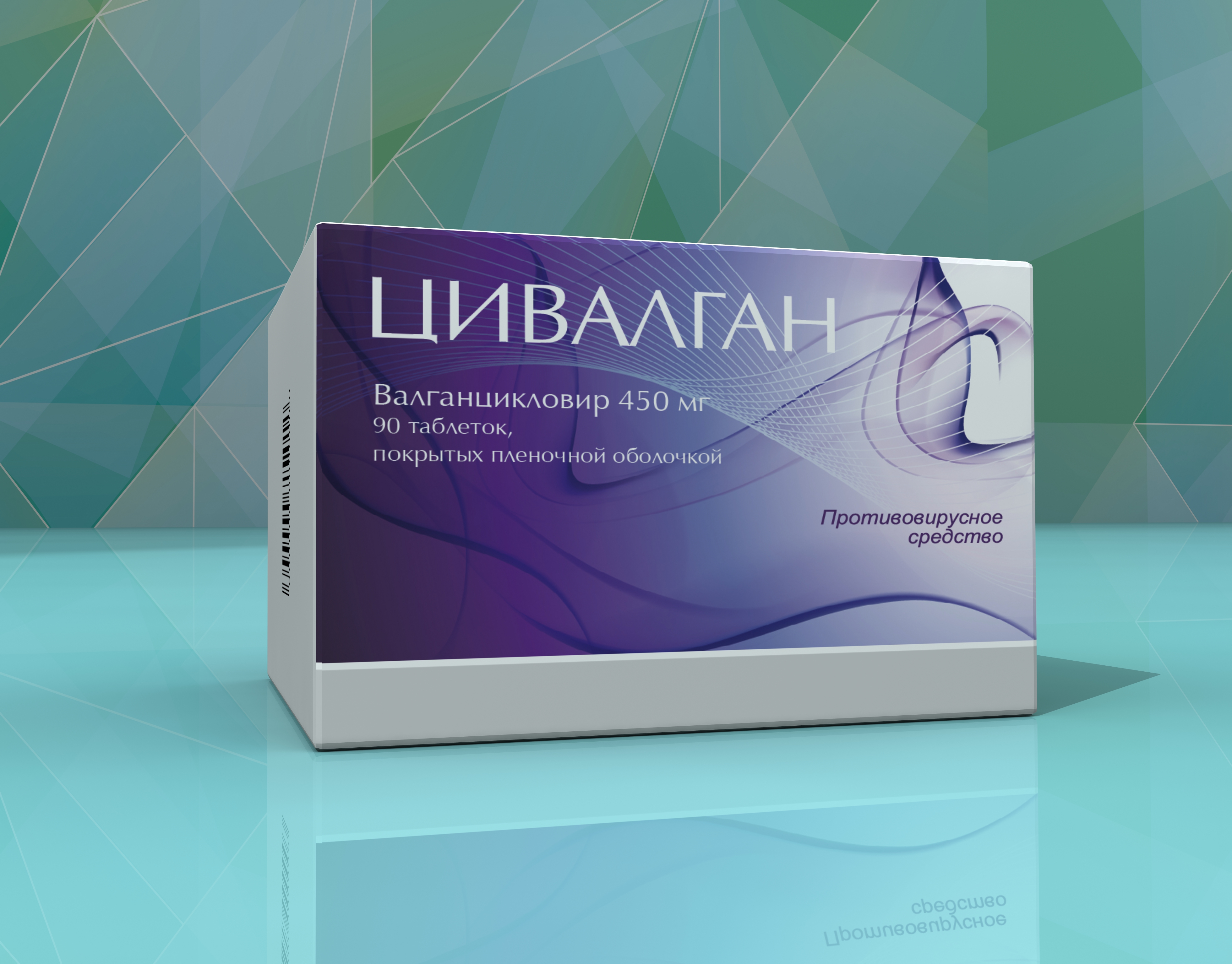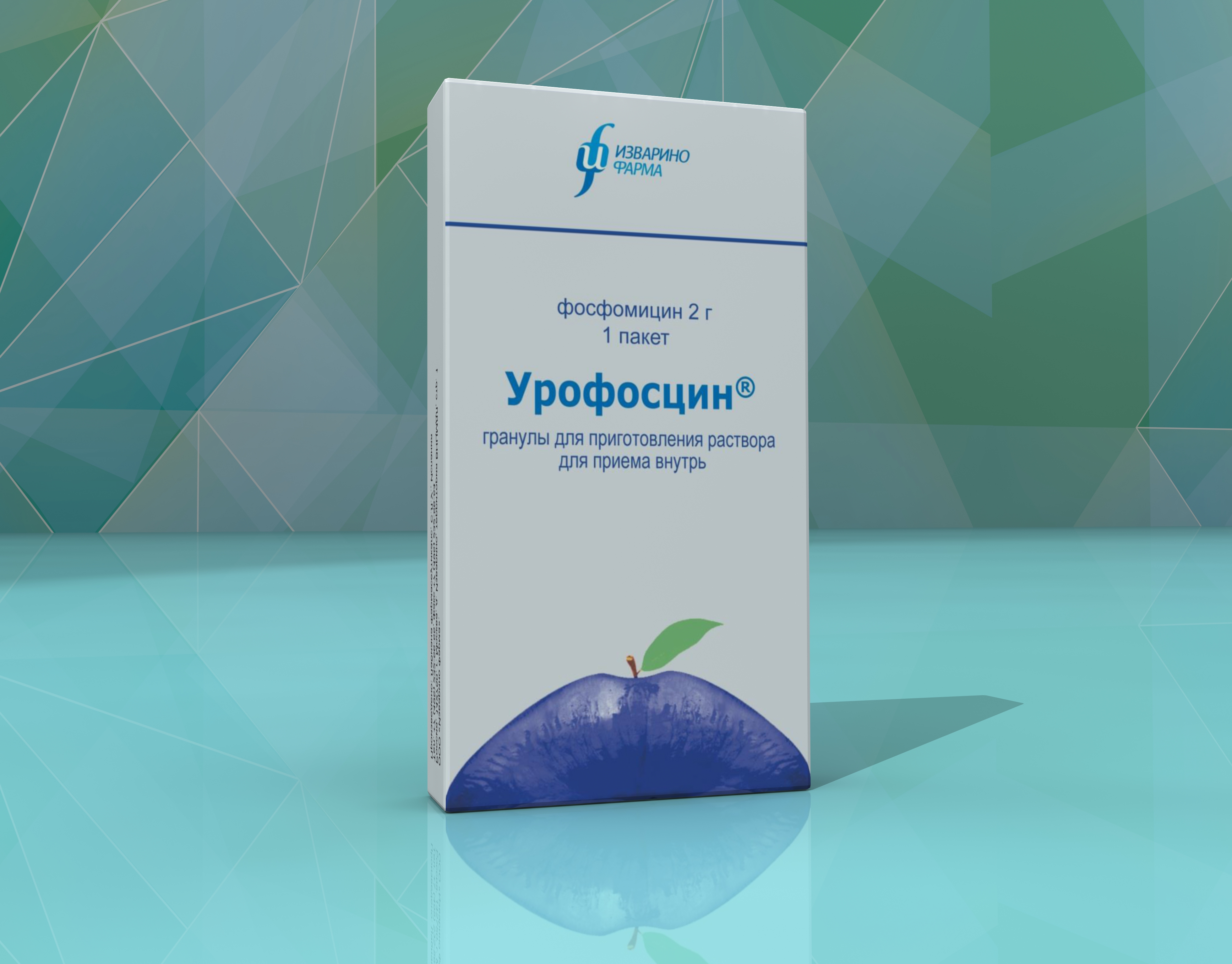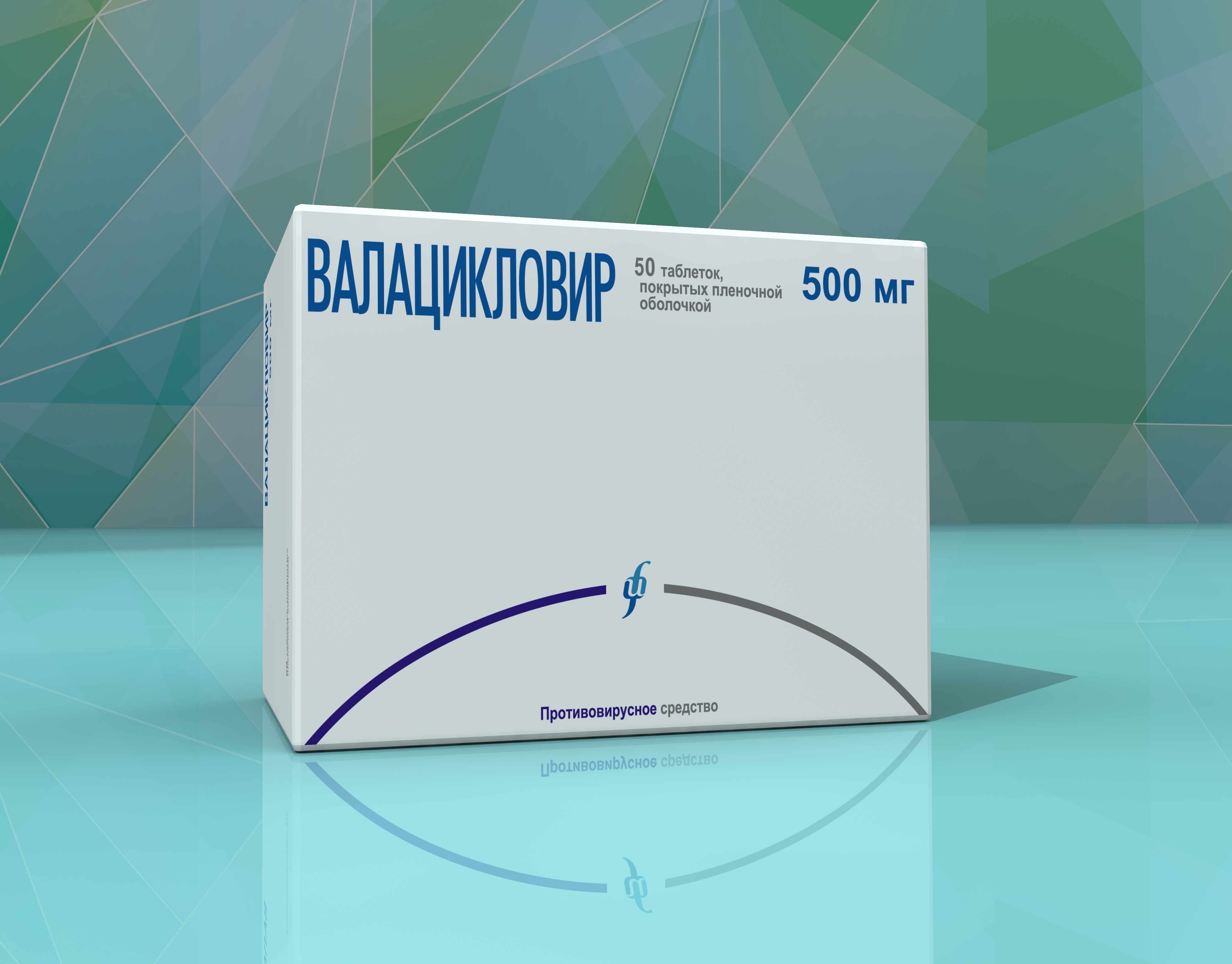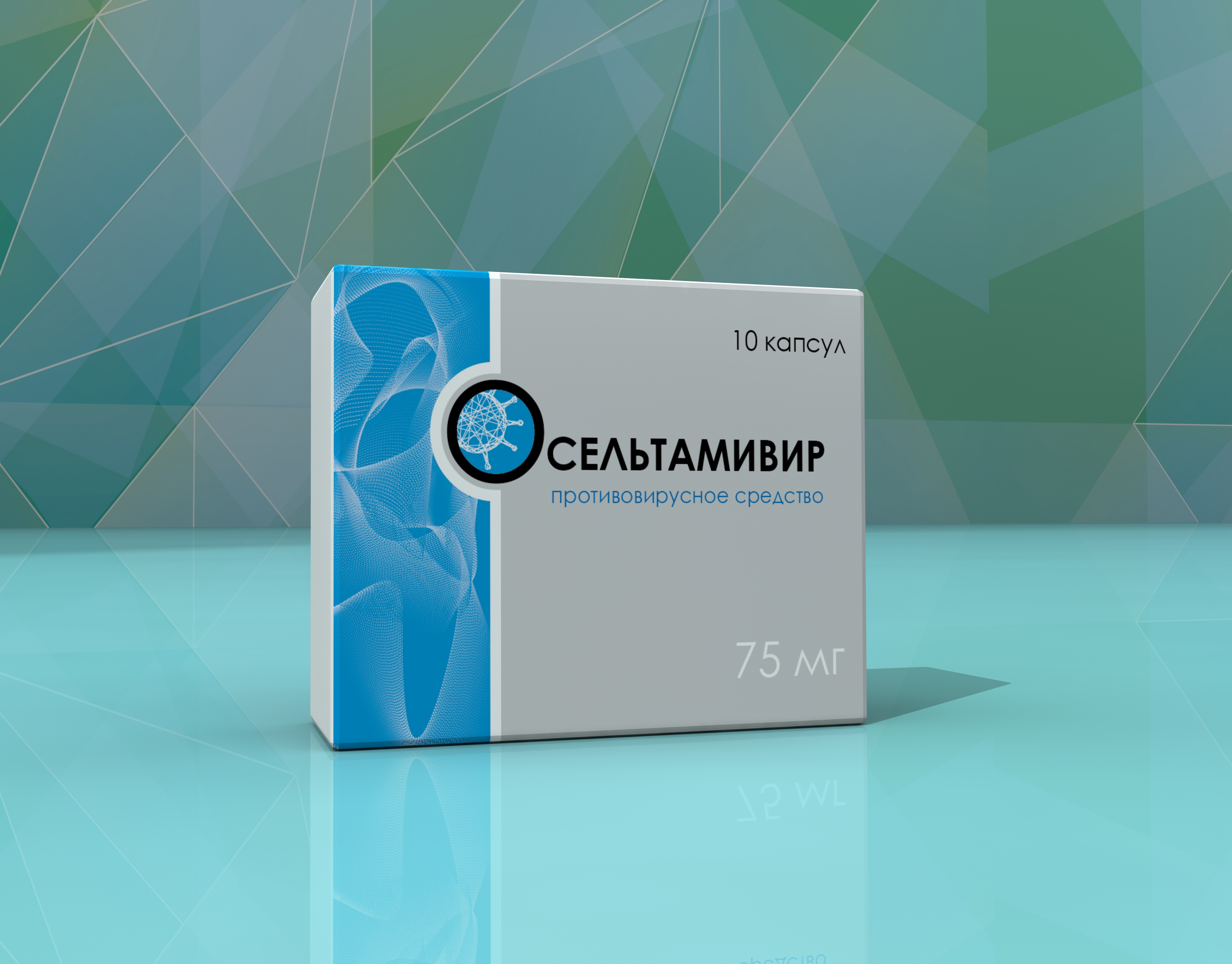Infections
Izvarino Pharma manufactures antiviral drugs for systemic treatment of such diseases as cytomegalovirus infection, HIV infection and others.

1 film-coated tablet contains:
Composition of tablet core:
Active ingredient: valganciclovir hydrochloride - 496.30 mg, equivalent to valganciclovir - 450.00 mg.
Film-coated tablets 450 mg. 10 tablets in a blister of polyvinyl chloride film and aluminum printed glazed foil are placed in a carton pack.
60 tablets are placed in high-pressure polyethylene bottle or jar with a screw cap. The empty space in the bottle or jar is filled with cotton, the neck of the bottle is hermetically sealed with polymer-coated aluminum foil.
1, 2, 3, 6, 9 or 12 blisters or
1 bottle with patient leaflets are placed in a carton pack.
Treatment of CMV retinitis in adult AIDS patients.
Prevention of CMV disease in solid organ transplant in adults and children above 16 years of age who are at risk.
Strict adherence to dosage recommendations is essential to avoid overdose.
Standard dosing regimen
Valganciclovir should be taken orally with food (see sections ‘Absorption’ and ‘Pharmacokinetics in Special Populations’ of section ‘Pharmacological properties’).
Valganciclovir rapidly and extensively metabolized to ganciclovir. Bioavailability of ganciclovir from valganciclovir tablets is 10 times higher than in oral administration of ganciclovir (see sections ‘Warnings and Precautions’ and ‘Overdosage’).
Treatment of CMV Retinitis
Adults
Induction Treatment of CMV Retinitis
For patients with active CMV retinitis, the recommended dosage of valganciclovir is 900 mg (2 tablets 450 mg) twice a day for 21 days. Prolonged induction treatment may increase the risk of bone marrow toxicity (see sections ‘Warnings and Precautions’).
Maintenance Treatment of CMV Retinitis
Following induction treatment, or in patients with inactive CMV retinitis, the recommended dosage is 900 mg (2 tablets 450 mg) once daily. Patients whose retinitis worsens may repeat induction treatment (see section ‘Induction Treatment of CMV Retinitis’ of section ‘Dosage and Administration’).
Prevention of CMV Disease after Solid Organ Transplantation
Adults
For kidney transplant patients, valganciclovir therapy should be started within 10 days of transplantation at a dose of 900 mg (2 tablets 450 mg) once daily and continued until 200 days post-transplantation.
For patients who have received a transplant of other solid organs, valganciclovir therapy should be started within 10 days of transplantation at a dose of 900 mg (2 tablets 450 mg) once daily and continued until 100 days post-transplantation.
Dosage Adjustment
Patients with Renal Impairment
Serum creatinine or creatinine clearance levels should be monitored carefully. Dosage adjustment is required for adult patients based on creatinine clearance as shown in the table below (see section ‘Pharmacokinetics in Special Populations’ of section ‘Pharmacological Properties’ and section ‘Warnings and Precautions’).
Calculation of creatinine clearance is based on serum creatinine by the following formulas:
For males =
(140 - age [years]) × (body weight [kg]) / (72) х (0.011 х serum creatinine [micromol/L])
For females = 0.85 × male value
|
Creatinine clearance (ml/min) |
Induction Dose |
Maintenance/Prophylaxis Dose |
|
≥ 60 |
900 mg twice daily |
900 mg once daily |
|
40-59 |
450 mg twice daily |
450 mg once daily |
|
25-39 |
450 mg once daily |
450 mg every 2 days |
|
10-24 |
450 mg every 2 days |
450 mg twice weekly |
|
< 10 |
not recommended |
not recommended |
Patients with Hepatic Impairment
The safety and efficacy have not been established.
Patients with severe leukopenia, neutropenia, anemia, thrombocytopenia, pancytopenia
Severe leukopenia, neutropenia, anemia, thrombocytopenia, pancytopenia, bone marrow failure and aplastic anemia have been observed in patients treated with valganciclovir. The treatment should not be started if the absolute neutrophil count is less than 500 cells in 1 µl or the platelet count is less than 25000 cells in 1 µl and if the hemoglobin is less than 80 g/L. In patients with severe leukopenia, neutropenia, anemia and/or thrombocytopenia, treatment with hematopoietic growth factors and/or the dose interruption of therapy is recommended (see sections ‘Warnings and Precautions’ and ‘Adverse Reactions’).
Elderly Patients
The safety and efficacy have not been established.
Pediatric Patients
Treatment of CMV Retinitis
Valganciclovir is not recommended for the treatment of CMV retinitis in children below 18 year of age because efficiency and safety of valganciclovir has not been established for this population.
Prevention of CMV Disease after Solid Organ Transplantation
The dosage regimen for children aged between 16 and 18 is not different from the recommendations for adults (see section ‘Prevention of CMV Disease after Solid Organ Transplantation’ of section ‘Dosage and Administration’). Valganciclovir is not recommended for the prevention of CMV disease after solid organ transplantation in children and adolescents below 16 year of age because efficiency and safety of valganciclovir has not been established for this population.

Active substance: fosfomycin trometamol 3.754 g or 5.631 g (equivalent to fosfomycin 2.000g or 3.000 g).
Granules for oral solution 2 g and 3 g.
5.334 g or 8.000 g in a heat sealed sachet of four-layer material (ionomer resin/ aluminum/ LDPE/paper).
1 or 2 sachets with instructions for use are placed in a carton pack.
Bacterial urinary tract infections of various localization caused by microorganisms susceptible to fosfomycin: acute uncomplicated urinary tract infections; asymptomatic bacteriuria; prophylaxis of urinary tract infections after surgery and trans-urethral diagnostic maneuvers.
Urofoscin® is taken as a single dose under fasting condition, 2-3 h before or after meal, preferably before the night resting, and after voiding the bladder: in adults and children aged over 12 in a daily dose of 3g, in children between 5 and 12 years old in a daily dose of 2 g. Contents of the sachet should be dissolved and in half a glass of water.
For the prophylaxis of urinary tract infections during surgery and trans-urethral diagnostic maneuvers the above dose is taken twice: 3 h before the procedure and 24 h after.
The course of treatment is 1 day.

1 film-coated tablet contains:
valaciclovir hydrochloride - 556.2 mg (equivalent to valaciclovir 500.0 mg).
Film-coated tablets, 500 mg.
10 capsules in a blister of PVC film and aluminum printed glazed foil.
1, 2, 3, 4, 5, or 6 blisters with patient leaflets are placed in a carton pack.
Adults and adolescents aged between 12 and 18
treatment of skin and mucosa infections caused by HSV including newly diagnosed recurrent genital herpes (Herpes genitalis) and labial herpes (Herpes labialis);
prophylaxis (suppression) of skin and mucosa infections caused by HSV including genital herpes including immunocompromised patients;
prophylaxis of infections caused by cytomegalovirus (CMV) and diseases after transplantation of parenchymal organs.
Adults
treatment of herpes zoster (shingles) and ophthalmic herpes zoster.
Oral, regardless of the meal with water.
Treatment of skin and mucosa infections caused by HSV including newly diagnosed recurrent genital herpes (Herpes genitalis) and labial herpes (Herpes labialis)/
Immunocompetent Adults and Adolescents Aged between 12 and 18
The recommended dose is 500 mg twice daily.
In case of relapse, treatment should last 3 or 5 days. In initial herpes that may proceed in a more severe form the treatment should be started as early as possible and its duration should be extended from 5 to
10 days. In recurrent HSV the most efficient is to administer valaciclovir at the prodromal stage or immediately at the earliest symptom of the disease. Valaciclovir can prevent lesion development when taken at the first signs and symptoms of an HSV recurrence.
Labial herpes can be alternatively effectively treated with valaciclovir dose of 2000 mg twice daily for 1 day. The second dose should be taken in approximately 12 h (but not less than in 6 h) after the first dose. In this dosage regimen the duration of treatment should not be longer that 1 day because longer treatment period does not lead to any additional clinical benefit.
Therapy should be initiated at the earliest symptom of a labial herpes (e.g., tingling, itching, or burning).
Prophylaxis (suppression) of skin and mucosa infections caused by HSV including genital herpes including immunocompromised patients/
Immunocompetent Adults and Adolescents Aged between 12 and 18
In immunocompetent patients the recommended dose is 500 mg once daily.
In 6-12 months of treatment the efficiency of therapy should be assessed.
Immunocompromised Adult Patients
In immunocompromised adult patients the recommended dose is 500 mg twice daily.
In 6-12 months of treatment the efficiency of therapy should be assessed.
Prophylaxis of infections caused by CMV and diseases after transplantation of parenchymal organs
Adults and adolescents aged between 12 and 18
The recommended dose is 2000 mg 4 times daily administered earliest possible after transplantation. The dose should be decreased depending on creatinine clearance.
The duration of treatment is generally 90 days but in patients at high risk the course of treatment can be prolonged.
Treatment of herpes zoster (shingles) and ophthalmic herpes zoster
Adults
The recommended dose is 1000 mg three times daily for 7 days.
Special Populations
Patients with Renal Impairment
Dose reduction is recommended for patients with evident renal impairment (see dosage regiment in Table 2). Adequate hydro-electrolytic balance should be maintained for such patients.
Valaciclovir should be administered after hemodialysis in patients receiving hemodialysis periodically.
Creatinine clearance should be frequently monitored especially when renal function changes are fast, for example, immediately after transplantation or after engraftment, while the dose of valaciclovir is adjusted based on creatinine clearance values.
Experience is not available for the use of valaciclovir in pediatric patients with a creatinine clearance less than
50 ml/min/1.73 m2.
Table 2. Valaciclovir Dosage Adjustments for Adults and Adolescents Aged between 12 and 18 years old with Renal Impairment
|
Indications |
Creatinine clearance, (ml/min) |
Valaciclovir dose |
|
Herpes zoster and ophthalmic herpes zoster in immunocompetent adults (treatment) |
at least 50 from 30 to 49 from 10 to 29 below 10 |
1000 mg 3 times daily 1000 mg twice daily 1000 mg once daily 500 mg once daily |
|
HSV (treatment) |
||
|
Immunocompetent Adults and Adolescents Aged between 12 and 18 |
at least 30 below 30 |
500 mg twice daily 500 mg once daily |
|
Labial herpes in immunocompetent adults and adolescents aged between 12 and 18 (treatment) |
at least 50 from 30 to 49 from 10 to 29 below 10 |
2000 mg twice daily 1000 mg twice daily 500 mg twice daily 500 mg once daily |
|
HSV (prophylaxis (suppression)) |
||
|
Immunocompetent Adults and Adolescents Aged between 12 and 18 |
at least 30 below 30 |
500 mg once daily 500 mg every 48 hours |
|
Immunocompromised Adult Patients |
at least 30 below 30 |
500 mg twice daily 500 mg once daily |
|
Prophylaxis of infections caused by CMV in adults and adolescents aged between 12 and 18 (treatment) |
at least 75 from 50 to 75 from 25 to 50 from 10 to 25 below 10 or in patients receiving hemodialysis |
2000 mg 4 times daily 1500 mg 4 times daily 1500 mg 3 times daily 1500 mg twice daily 1500 mg once daily |
Patients with Hepatic Impairment
According to existing data on usage of 1000 mg single dose of valaciclovir, dose modification is not required in adult patients with mild or moderate cirrhosis (hepatic synthetic function maintained). Pharmacokinetic data in patients with advanced hepatic dysfunction (decompensated cirrhosis), impaired hepatic synthetic function and evidence of portal-systemic shunting do not indicate the need for dosage adjustment either. However, clinical data for these pathologies is limited.
Pediatric patients aged below 12
There is no data on the use of valaciclovir in children under 12 years of age.
Elderly Patients
The possibility of renal impairment in geriatric patients must be considered and the dosage of Valaciclovir should be adjusted accordingly (see Table 2). Adequate hydro-electrolytic balance should be maintained.

Active ingredient: oseltamivir phosphate - 39.4 mg (equivalent to oseltamivir - 30.0 mg).
1 capsule 45 mg contains:
Active ingredient: oseltamivir phosphate - 59.1 mg (equivalent to oseltamivir - 45.0 mg).
1 capsule 75 mg contains:
Active ingredient: oseltamivir phosphate - 98.5 mg (equivalent to oseltamivir - 75.0 mg).
10 or 15 capsules in a blister of PVC film and aluminum foil.
1, 3, 6, or 9 blisters of 10 capsules each, or 1, 2, 4, or 6 blisters of 15 capsules each, together with patient leaflets, are placed in a carton pack.
Treatment of influenza in adult and pediatric patients of 1 year and older.
Prophylaxis of Influenza in adults and adolescents 12 years and older at high risk of becoming infected with the virus (in military units and large production teams, in fragile patients).
Prophylaxis of Influenza in pediatric patients 1 year and older.
Oral, with meal or without meal. Taking with food may enhance tolerability.
For those who cannot swallow a capsule, one capsule may be opened and mixed with a little (1 teaspoon maximum) of sweetened food product (regular or sugar-free chocolate syrup, honey, light brown sugar or table sugar dissolved in water, sweet dessert, condensed milk with sugar, applesauce or yogurt) in order to hide the bitter taste. The mixture must be thoroughly mixed and given to the patient as a whole. The mixture should be swallowed immediately after preparation. Detailed recommendations are given in section ‘Compounded Oseltamivir Suspension’.